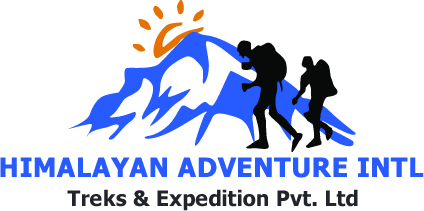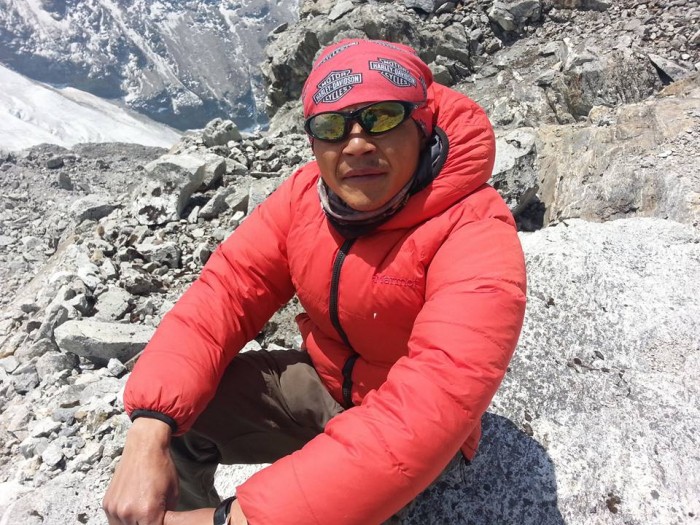The Manaslu Circuit Trek is one of Nepal’s most spectacular off-the-beaten-path adventures, offering dramatic mountain scenery, Tibetan-influenced culture, and a challenging yet rewarding journey around the world’s eighth-highest peak, Mount Manaslu (8,163m). Whether you’re planning a Manaslu Trek 12 days cost breakdown, exploring the remote Tsum Valley, or combining it with the Annapurna Circuit, this guide provides all essential information for your unforgettable Himalayan adventure with Himalayan Adventure International Treks.
Why Choose the Manaslu Circuit Trek?
Unlike the busier Everest and Annapurna routes, the Manaslu Circuit Trek offers pristine landscapes, fewer crowds, and authentic village life. You'll hike through diverse terrain, lush forests, cascading rivers, and cross the high Larke Pass (5,160m). The combination of natural beauty and spiritual heritage makes it one of the best treks in Nepal.
Manaslu Circuit Trek Best Time
The best time for Manaslu Circuit Trek is during the spring (March to May) and autumn (September to November). These seasons offer:
-
Clear skies and incredible views of the Manaslu range
-
Stable weather with mild temperatures
-
Blooming rhododendrons in spring
-
Post-monsoon greenery and festive season atmosphere in autumn
Avoid the trek during monsoon (June to August) due to landslides and slippery trails, and in winter (December to February) due to heavy snow at high altitudes.
Manaslu Circuit Trek Itinerary (12 Days)
Here's a detailed Manaslu Circuit Trek 12 days itinerary:
Day 1: Drive from Kathmandu to Machha Khola (900m)
Day 2: Trek to Jagat (1,410m)
Day 3: Trek to Deng (1,800m)
Day 4: Trek to Namrung (2,630m)
Day 5: Trek to Samagaun (3,530m)
Day 6: Acclimatization day at Samagaun (visit Pungyen Gompa or Manaslu Base Camp)
Day 7: Trek to Samdo (3,860m)
Day 8: Trek to Dharamsala (4,460m)
Day 9: Cross Larke La Pass (5,160m), trek to Bimthang (3,720m)
Day 10: Trek to Dharapani (1,920m)
Day 11: Drive to Kathmandu or Pokhara
For a Manaslu Circuit Trek 14 days or to include Tsum Valley, you’ll need extra days – discussed below.
Tsum Valley and Manaslu Circuit Trek Itinerary (Combined)
The Tsum Valley and Manaslu Circuit Trek is a perfect fusion of spiritual isolation and mountain grandeur. Add 7–9 days to your Manaslu itinerary to explore the sacred valley.
Suggested Tsum Valley and Manaslu Circuit Trek Itinerary (21 Days):
-
Days 1–4: Kathmandu to Chumling via Soti Khola and Jagat
-
Days 5–7: Trek to Chhokangparo, Mu Gompa, Rachen Gompa (explore Tsum)
-
Days 8–9: Return to Lokpa, continue to Deng
-
Days 10–21: Follow the classic Manaslu Circuit route via Lho, Samagaun, Samdo, Larke Pass
Manaslu Circuit and Annapurna Circuit Trek Itinerary (Combo Trek)
For hardcore trekkers, a Manaslu Circuit and Annapurna Circuit Trek itinerary offers a once-in-a-lifetime journey covering both circuits in 24–28 days. From Larke Pass, continue through Dharapani and join the Annapurna Circuit toward Thorong La Pass (5,416m), ending at Jomsom or Pokhara.
Manaslu Trek Difficulty
The Manaslu Trek difficulty is moderate to challenging. Factors that affect difficulty include:
-
Long daily ascents and descents
-
Remote trails with limited infrastructure
-
Larke La Pass at 5,160m – a high-altitude crossing
-
Unpredictable weather and altitude-related challenges
Trekking experience is helpful, but first-time trekkers in good shape can complete it with proper guidance.
Altitude & AMS: Manaslu Trekking AMS Sickness and Prevention
Altitude sickness is a concern above 2,500m. Key symptoms include headache, nausea, fatigue, and dizziness.
Prevention Tips:
-
Acclimatize properly (extra day in Samagaun is vital)
-
Ascend gradually
-
Stay hydrated (3–4 liters/day)
-
Avoid alcohol
-
Take Diamox if advised by a doctor
-
Use experienced guides from Himalayan Adventure Intl Treks
Manaslu Circuit Trek Distance
The total distance of the Manaslu Circuit is around 177 km (110 miles). Daily hikes range from 10–20 km depending on altitude and terrain.
Manaslu Circuit Trek Permit Cost
You’ll need the following permits:
-
Manaslu Restricted Area Permit (MRAP)
-
September–November: USD 100 for first 7 days, USD 15/day thereafter
-
December–August: USD 75 for first 7 days, USD 10/day thereafter Manaslu Conservation Area Permit (MCAP) – USD 30 Annapurna Conservation Area Permit (ACAP) – USD 30 Tsum Nubri Municipality fee cost: USD 10 per week per person
These permits must be arranged through a registered agency like Himalayan Adventure International Treks.
Manaslu Trek 12 Days Cost – Budget Breakdown
Here’s a typical Manaslu Trek 12 days cost overview (per person):
| Expense |
Cost (USD) |
| Permit fees (MRAP + MCAP + ACAP + tax) |
$200–280 |
| Guide (mandatory) |
$25/day × 12 = $300 |
| Porter (optional) |
$20/day × 12 = $240 |
| Accommodation (teahouse) |
$6–10/night |
| Food (3 meals/day) |
$20–30/day |
| Transport (Kathmandu-Soti & Dharapani) |
$60–90 total |
| Miscellaneous (snacks, gear rental) |
$50–100 |
| Total Estimated |
$900–1100 |
Manaslu Tsum Valley Trekking Cost (14–21 Days)
Expect to pay more for Manaslu Tsum Valley Trek due to additional days and permits.
-
Manaslu Tsum Valley Trek cost (14–21 days): USD 1,500–1,800
-
Includes all permit fees, guide/porter, meals, and accommodations
Tsum Valley Hike Cost (if doing only Tsum): USD 700–900 (10–12 days)
Manaslu Circuit Trek Food, Accommodation & Drinking Water Cost
-
Food: $7–12 per meal, depends on altitude
-
Accommodation: Basic teahouses ($6–10/night)
-
Drinking Water: $1–3 per liter (use purification tablets or SteriPen to save costs)
Himalayan Adventure International Treks offers full-board packages that include meals, lodging, and logistics.
Manaslu Circuit Solo, Couple, Group Join and Group Trek Cost
Solo trekking in Manaslu is not allowed due to restricted area rules. You must have at least 2 trekkers and a licensed guide.
Approximate cost ranges:
-
Solo (with guide/porter): USD 1,500–1,800
-
Couple: USD 950–1,100 per person
-
Group Join: USD 950–1050 per person (cheapest)
-
Group Trek Cost (private): USD 1,000–1,200 per person depending on group size
Manaslu Circuit Trek Cost for Indian Citizens
Indian nationals benefit from reduced permit costs for conservation areas:
Total cost for Indian trekkers (12–14 days): USD 700–950
Manaslu Circuit Trek Guide and Porter Cost
-
Guide: $25–30/day (licensed, English-speaking, mandatory)
-
Porter: $20–25/day (carries up to 20kg)
Hiring both is highly recommended for safety and comfort.
Short Manaslu Circuit Trek
Short on time? A Short Manaslu Circuit Trek is possible in 10–11 days by adjusting transport and cutting acclimatization days.
Note: It increases the risk of AMS. Consult with Himalayan Adventure Intl Treks before choosing this option.
Why Trek Manaslu with Himalayan Adventure International Treks?
-
Experienced local guides and porters
-
Customizable itineraries including Tsum Valley and Annapurna
-
Reasonable pricing with transparent cost
-
Permit handling and transportation arranged
-
Emergency support and AMS safety protocols
The Manaslu Circuit Trek is a hidden gem that rivals the beauty of the Annapurna and Everest regions without the crowds. Whether you opt for a 12-day Manaslu trek, a spiritual detour into Tsum Valley, or a longer combo with Annapurna, this journey will be life-changing.
With Himalayan Adventure International Treks, you get expertise, value, and safety rolled into one unforgettable package.
Book Your Manaslu Adventure Today
Contact Himalayan Adventure International Treks to plan your Manaslu Circuit Trek 12 Days, Tsum Valley Tour, or Combined Trek Packages with expert guidance, competitive pricing, and full support.
Visit: Himalayan Adventure Intl Treks
Email: info@himalayanadventureintl.com
WhatsApp: +977-9803526139

 Plan Your Trip Now
Plan Your Trip Now 



